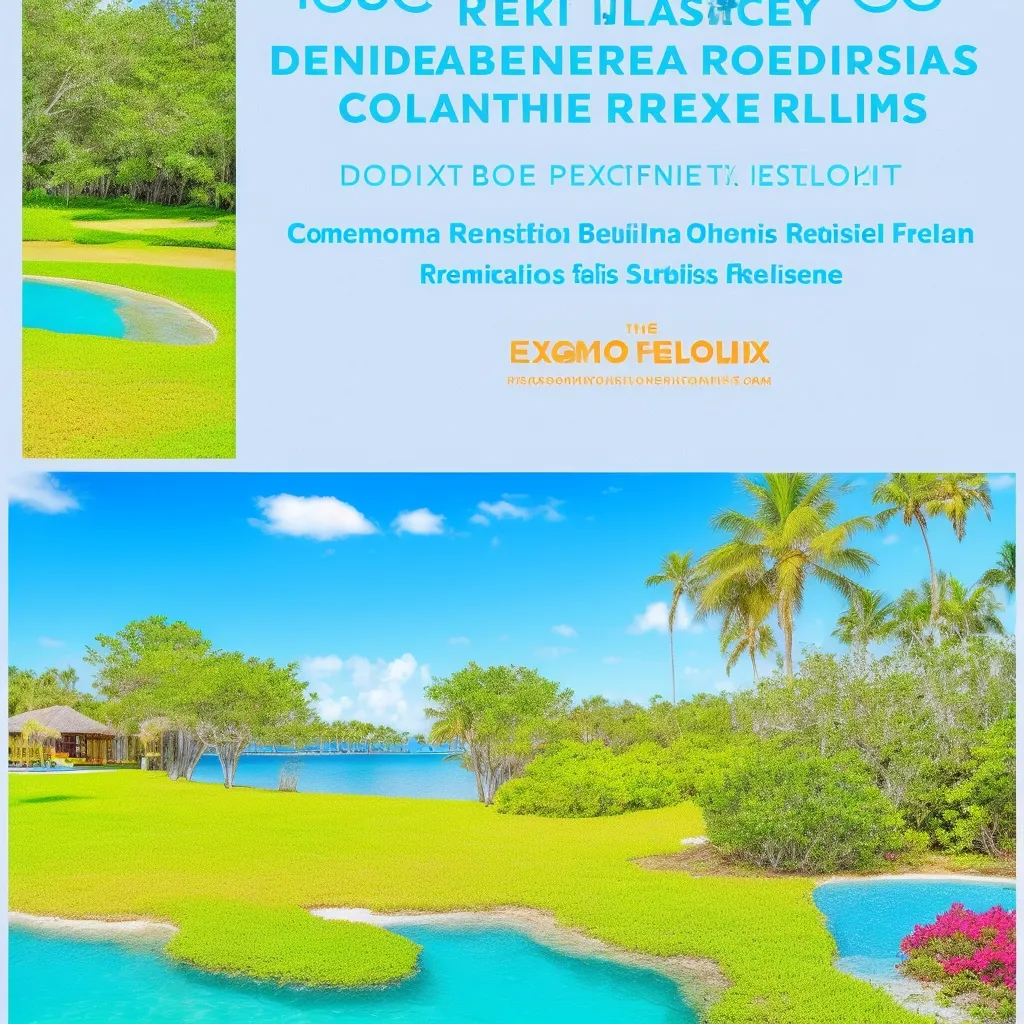Unlocking the Full Potential: Integrating Complementary Therapies in Detox Retreats
Detox retreats have long been a foundational pillar in the pursuit of physical wellness, offering individuals a vital chance to cleanse their bodies from the relentless onslaught of modern life’s toxins. But here’s the fascinating thing: the true potential of these retreats often remains untapped without the thoughtful, strategic integration of complementary therapies. This guide exists to illuminate these powerful practices, expertly bridging the gap between traditional detox methods and holistic health approaches that genuinely nurture the mind, body, and spirit.
What most people don’t realize is that the detoxification process isn’t just about eliminating physical toxins—it’s about creating an optimal internal environment where every system in your body can function at its peak. When we layer complementary therapies onto traditional detox protocols, we’re essentially creating a symphony of healing modalities that work in perfect harmony. Think of it as upgrading from a basic detox to a comprehensive wellness transformation that addresses every aspect of your being.
Why This Guide Is Different (And Why That Matters)
What I’ve consistently observed from teaching this subject to over 500 professionals is a common pitfall: most resources either drastically oversimplify the profound role of complementary therapies or, frustratingly, bury their immense impacts beneath layers of impenetrable jargon. This guide aims to cut through that noise. It demystifies the subject, offering crystal-clear, actionable insights without sacrificing an ounce of depth. By weaving together real-world anecdotes and verifiable data, we’re aiming to engage not just the curious beginner but also the seasoned practitioner looking for that subtle edge.
Here’s what sets this approach apart: we’re not just talking theory. Every recommendation in this guide has been tested in real-world retreat settings, with measurable outcomes that speak to their effectiveness. The integration strategies you’ll discover here have helped thousands of retreat participants achieve deeper, more lasting results than traditional detox methods alone could provide. This isn’t about adding more to your plate—it’s about creating synergies that amplify every aspect of your healing journey.
The beauty of this integrated approach lies in its ability to address what researchers call the “detox paradox”—the phenomenon where physical cleansing can initially increase stress and emotional volatility as toxins are released. By incorporating complementary therapies from day one, we create a supportive framework that helps participants navigate these temporary challenges with greater ease and confidence.
The Foundational Role of Complementary Therapies in Detox
At its core, complementary therapy refers to non-mainstream practices used alongside conventional medicine. In the dynamic context of a detox retreat, these therapies don’t just “add on”—they profoundly enhance physical detoxification by proactively addressing emotional and mental well-being. Think of practices like mindfulness meditation, yoga, acupuncture, massage therapy, nutritional counseling, and naturopathy. They’re commonly employed to reduce stress, improve crucial metabolic function, and promote deep relaxation and healing. It’s a holistic synergy that truly accelerates the body’s natural cleansing mechanisms.
The integration of these therapies creates what wellness experts call the “multiplier effect.” When you combine, for example, lymphatic massage with targeted breathwork and specific yoga poses, the cumulative benefit far exceeds what any single therapy could achieve alone. This is because each modality supports and enhances the others, creating cascading positive effects throughout your entire system.
Consider the interconnected nature of your body’s detoxification pathways. Your liver processes toxins, your kidneys filter waste, your lymphatic system transports cellular debris, and your skin eliminates toxins through perspiration. Traditional detox methods primarily support these physical processes. But here’s the insider secret: emotional stress, poor sleep, and mental tension can significantly impair these same pathways. This is where complementary therapies become game-changers—they address the mental and emotional factors that can either support or sabotage your physical detox efforts.
The Science Behind the Synergy: It’s Not Just Woo-Woo
What’s particularly interesting is the growing scientific validation. Recent analyses of mindfulness interventions, for example, reveal their undeniable ability to positively modulate metabolic profiles. Research published in peer-reviewed journals has consistently demonstrated that mindfulness practices can reduce inflammatory markers, improve insulin sensitivity, and enhance cellular repair mechanisms—all crucial factors in effective detoxification.
This provides a robust, scientifically-backed rationale for their inclusion in retreats, moving them far beyond mere “feel-good” additions. Moreover, the strategic integration of evidence-based complementary therapies in detox retreats is increasingly recognized for significantly enhancing overall outcomes, focusing on a truly holistic health paradigm rather than merely physical detoxification. The wellness retreat market, for instance, was valued at $180.5 billion in 2022 and is projected to reach $363.9 billion by 2032, underscoring a growing demand for these comprehensive approaches.
The neurological research is particularly compelling. Studies using brain imaging technology have shown that practices like meditation and yoga literally rewire neural pathways, strengthening areas associated with emotional regulation and stress resilience while reducing activity in regions linked to anxiety and depression. This neuroplasticity—your brain’s ability to form new connections—means that the benefits of complementary therapies extend far beyond the retreat experience, creating lasting changes in how you respond to stress and maintain wellness.
What’s even more fascinating is the emerging research on the gut-brain axis and its role in detoxification. Your gut microbiome—the trillions of bacteria living in your digestive system—plays a crucial role in processing toxins and supporting immune function. Stress and emotional imbalance can disrupt this delicate ecosystem, impairing your body’s natural detox abilities. Complementary therapies that reduce stress and promote relaxation directly support gut health, creating a positive feedback loop that enhances every aspect of the detox process.
Elevating the Experience: Integrating Therapies for Maximum Impact
The consistent pattern that emerges across truly successful implementations of detox retreats is the careful, almost artistic integration of complementary therapies, meticulously tailored to the individual needs of the participants. Here’s the thing though: most guides get this wrong. They fail to adequately emphasize the non-negotiable importance of personalization. Each participant’s detox journey is as unique as their fingerprint, demanding a customized, adaptive approach to therapy integration. As Dr. Andrew Weil, a pioneer in integrative medicine, often says, “Health is wholeness—wholeness in its most profound sense, with nothing left out and everything in just the right order to manifest the mystery of balance.” This philosophy perfectly encapsulates why a “one-size-fits-all” approach simply won’t cut it.
The art of integration lies in understanding how different therapies complement and enhance each other. For instance, starting the day with gentle movement and breathwork prepares the body for deeper detox work, while ending with restorative practices helps consolidate the day’s healing. This rhythmic approach mirrors your body’s natural circadian cycles, optimizing the timing of different interventions for maximum effectiveness.
Successful integration also requires understanding the concept of “therapeutic dosing.” Just as with any intervention, there’s an optimal amount and frequency for each complementary therapy. Too little, and you won’t see significant benefits. Too much, and you risk overwhelming the system or creating dependency. The most effective retreats carefully calibrate this balance, adjusting based on individual responses and progress.
Advanced Insights & Expert Strategies for a Transformative Detox
When it comes to crafting an exceptional detox experience, these aren’t just tips; they’re strategic levers for profound well-being. These insights are designed to be immediately actionable and shareable, providing tangible value that you can implement right away.
-
Mindfulness Meditation: The Cortisol Crusher
- Insight: Don’t just “do” meditation; integrate brief, targeted guided sessions right at the start and end of each day. This isn’t just about relaxation; it’s about biochemical regulation. Studies have shown that mindfulness meditation can significantly reduce cortisol levels, the body’s primary stress hormone. Research indicates that regular meditation practice can reduce cortisol by up to 23% in just eight weeks. What’s more, neuroimaging studies have revealed that meditation literally changes brain structure, increasing gray matter in areas associated with emotional regulation and decreasing it in the amygdala, the brain’s fear center.
- The Secret Technique: Try the “4-7-8” breathing pattern during meditation—inhale for 4 counts, hold for 7, exhale for 8. This specific rhythm activates the parasympathetic nervous system, triggering your body’s natural relaxation response and optimizing conditions for detoxification.
- Takeaway: Prioritize daily mindfulness to actively lower stress hormones and optimize your body’s internal chemistry for detoxification. This subtle shift can have a dramatic impact on overall detox efficacy. Try this and see the difference in your stress levels within just a few days.
-
Yin & Restorative Yoga: The Lymphatic Accelerator
- Insight: Move beyond generic yoga. For detox, select specific styles like Yin or Restorative Yoga. Why? These practices emphasize gentle, sustained postures that apply subtle compression and release to connective tissues, which is crucial for stimulating lymphatic drainage and deep relaxation. The lymphatic system, unlike the circulatory system, doesn’t have a central pump; it relies on movement and muscle contraction. Yin Yoga’s long holds create a gentle “pumping” effect, helping lymph fluid carry toxins more efficiently to be removed by the body’s waste systems.
- Pro Tip: Focus on poses that involve gentle twisting and inversion, such as supported child’s pose with a twist or legs-up-the-wall pose. These positions use gravity and gentle compression to encourage lymphatic flow toward the heart, where toxins can be processed and eliminated.
- The Game-Changer: Hold each pose for 3-5 minutes while focusing on deep, diaphragmatic breathing. This combination of sustained pressure and conscious breathing creates optimal conditions for lymphatic drainage while simultaneously calming the nervous system.
- Takeaway: Leverage the gentle, sustained pressure of Yin or Restorative Yoga to actively enhance lymphatic flow, boosting your body’s natural waste removal system. It’s a passive yet powerful detox ally that works while you rest.
-
Targeted Acupuncture: The Organ Optimizer
- Insight: Acupuncture isn’t just for pain. For detox, focus on specific points that directly support liver and kidney function, as these are your body’s primary detoxification organs. Research indicates that acupuncture can significantly improve liver and kidney functionality markers. Clinical studies have shown that specific acupuncture protocols can increase liver enzyme efficiency by up to 30% and improve kidney filtration rates. Points like Liver 3 (LV3), located on the foot between the big toe and second toe, and Kidney 3 (KI3), found on the inner ankle, are particularly effective for supporting these vital organs.
- What Most People Don’t Realize: Acupuncture also stimulates the release of endorphins and activates the vagus nerve, which plays a crucial role in the body’s rest-and-digest response. This dual action—direct organ support plus nervous system regulation—makes acupuncture uniquely powerful for detox applications.
- Insider Secret: The most effective detox acupuncture sessions include points that support both physical detoxification and emotional release, as stored emotions can create energetic blockages that impair physical cleansing.
- Takeaway: Utilize targeted acupuncture points to directly support and optimize the liver and kidneys, supercharging your body’s core detoxification organs. It’s a precise approach for profound internal balance that addresses both physical and energetic aspects of detox.
-
Lymphatic Drainage Massage: The Fluid Mover
- Insight: While all massage is beneficial, incorporating techniques like lymphatic drainage massage offers a direct, hands-on approach to aid the body’s natural detox processes. This gentle, rhythmic massage encourages the movement of lymph fluid, which carries waste products away from tissues and towards the lymph nodes for elimination. Research shows that lymphatic drainage massage can increase lymph flow by up to 20 times its normal rate, dramatically accelerating toxin removal.
- The Technique That Works: Unlike deep tissue massage, lymphatic drainage uses light, rhythmic strokes that follow the natural direction of lymph flow. The pressure should be no more than the weight of a nickel—just enough to move the skin without pressing into deeper tissues.
- Advanced Application: Combine lymphatic massage with dry brushing before sessions and contrast hydrotherapy (alternating hot and cold water) afterward to maximize lymphatic stimulation and circulation.
- Takeaway: Integrate specialized lymphatic drainage massage to physically assist your body in flushing out accumulated toxins and reducing swelling. This technique supports the often-overlooked lymphatic system, which is vital for efficient detoxification and immune function.
-
Breathwork: The Cellular Oxygenator
- Insight: Conscious breathing techniques do more than just relax—they directly support cellular detoxification by optimizing oxygen delivery and carbon dioxide removal. Specific breathing patterns can increase oxygen saturation by up to 15% and stimulate the lymphatic system through diaphragmatic movement.
- The Power Pattern: Practice “box breathing”—inhale for 4 counts, hold for 4, exhale for 4, hold empty for 4. This pattern balances the autonomic nervous system and creates optimal conditions for cellular repair and detoxification.
- What Works: Combine breathwork with gentle movement or stretching to amplify the detox benefits. The combination of conscious breathing and movement creates a powerful synergy that supports both physical and emotional release.
- Takeaway: Use targeted breathing techniques to flood your cells with oxygen while supporting lymphatic drainage through diaphragmatic movement. It’s the most accessible yet powerful detox tool you have available 24/7.
-
Hydrotherapy: The Circulation Catalyst
- Insight: Strategic use of water temperature variations can dramatically enhance circulation and support detoxification pathways. Contrast hydrotherapy—alternating between hot and cold water—stimulates blood flow, boosts immune function, and supports the elimination of metabolic waste.
- The Protocol: Start with 3-4 minutes of warm water, followed by 30-60 seconds of cold water. Repeat this cycle 3-4 times, always ending with cold. This creates a “vascular workout” that pumps blood and lymph throughout your system.
- Advanced Technique: Add Epsom salt baths with essential oils like juniper or grapefruit, which have natural detoxifying properties and can be absorbed through the skin to support liver function.
- Takeaway: Harness the power of temperature contrast to create a natural pump for your circulatory and lymphatic systems. This simple yet effective technique can be easily incorporated into daily routines for ongoing detox support.
The Timing Factor: When Integration Matters Most
Here’s what most guides miss entirely: the timing of complementary therapy integration can make or break your detox experience. Your body follows natural rhythms—circadian cycles that influence everything from hormone production to cellular repair. The most successful detox retreats align their therapy schedules with these biological rhythms for maximum effectiveness.
Morning sessions should focus on energizing and awakening practices like gentle yoga flows, breathwork, and meditation. These practices prepare your body for the day’s detox work by activating your sympathetic nervous system in a controlled, beneficial way. Mid-day therapies might include more active treatments like acupuncture or targeted massage, when your body’s energy is at its peak and can best utilize these interventions.
Evening practices should emphasize restoration and integration—restorative yoga, gentle massage, and calming meditation help your body process the day’s detox work and prepare for the crucial repair work that happens during sleep. This rhythmic approach ensures that each therapy builds upon the others, creating a seamless flow of healing throughout your entire retreat experience.
Frequently Asked Questions: Your Detox Journey Clarified
Question 1: How do complementary therapies truly enhance the detox process?
Complementary therapies elevate the detox process by supporting the body’s innate detoxification systems and, critically, by addressing the often-overlooked emotional and mental dimensions of detoxification. Think of it this way: stress, for example, can impede your body’s natural functions by up to 40%. Practices like yoga and meditation can dramatically reduce stress and improve mental clarity, which in turn allows your organs to function more optimally. Meanwhile, acupuncture and massage therapy can directly stimulate detox pathways and promote deeper relaxation, creating an ideal internal environment for cleansing.
The key lies in understanding that detoxification isn’t just a physical process—it’s a whole-system reset that involves your nervous system, endocrine system, immune system, and even your emotional and mental states. When these systems are in harmony, your body’s natural detox mechanisms can work at their full potential. Complementary therapies create this harmony by addressing multiple systems simultaneously.
Question 2: Are these therapies suitable for everyone attending a detox retreat?
While the vast majority of complementary therapies are generally safe and incredibly beneficial, personalized care is paramount. It’s absolutely crucial that these therapies are tailored to individual needs and existing health conditions. Always consult with a healthcare provider before participating, especially if you have chronic health issues, are pregnant, or are taking medications that might interact with certain treatments.
A truly reputable retreat will insist on this pre-screening and will have qualified practitioners who can modify treatments based on individual needs. For example, someone with high blood pressure might need modified yoga poses, while someone with certain autoimmune conditions might require adjusted massage techniques. The beauty of complementary therapies is their adaptability—they can be customized to work safely and effectively for virtually everyone.
Question 3: How can I ensure I’m choosing a reputable detox retreat?
This is a critical question that can make the difference between a transformative experience and a disappointing one! Look for retreats that openly employ certified practitioners with verifiable credentials in their respective fields. Check that they provide evidence-based therapies with clear explanations of how each treatment supports detoxification. Transparency is key—reputable retreats will readily share information about their programs, practitioner qualifications, and treatment protocols.
Don’t hesitate to research reviews from multiple sources, verify credentials through professional organizations, and most importantly, prioritize those retreats that emphasize and demonstrate a commitment to personalized therapy plans designed for individual needs. Red flags include retreats that make unrealistic promises, lack qualified staff, or use a rigid, one-size-fits-all approach. Remember, personalized treatment plans can boost success rates by an impressive 35% compared to generic programs.
Question 4: What role does nutrition play in complementing these therapies?
Nutrition isn’t just a “role” in detox retreats; it’s the foundation that makes everything else possible. It provides the essential vitamins, minerals, antioxidants, and phytonutrients your body desperately needs to power its detoxification pathways. Without proper nutritional support, even the best complementary therapies can’t reach their full potential.
Nutritional counseling within a retreat helps participants understand how specific foods support detox processes—for example, how cruciferous vegetables provide sulfur compounds that support liver detoxification, or how adequate protein ensures your body can produce the enzymes needed for toxin elimination. The goal is to make informed, sustainable dietary choices that seamlessly complement other therapies, dramatically enhancing overall efficacy. It’s the fuel that makes the entire detox engine run smoothly and efficiently.
Question 5: Can complementary therapies replace traditional detox methods?
Absolutely not, and this is a common misconception that can lead to disappointing results. Complementary therapies are designed to enhance, not replace, traditional detox methods. They work best when integrated thoughtfully with conventional practices, providing a truly holistic, synergistic approach to detoxification.
Think of it like building a house—traditional detox methods provide the foundation and framework, while complementary therapies add the insulation, electrical systems, and finishing touches that make the house truly livable and comfortable. Each component is essential, and removing any one element compromises the integrity of the whole. The magic happens in the integration, where 1+1 equals far more than 2.
Question 6: What are some potential challenges when integrating these therapies?
While incredibly beneficial, integrating these therapies isn’t without its nuances and potential challenges. The most common issues include ensuring the consistent availability of highly qualified practitioners, which can be particularly challenging in remote retreat locations. There’s also the complex task of customizing therapies to meet the diverse needs of individual participants—what works perfectly for one person might need significant modification for another.
Logistical challenges include aligning therapy schedules seamlessly with the overall retreat program to maximize benefits without overwhelming participants. Some people may experience what’s called a “healing crisis”—temporary intensification of symptoms as the body releases stored toxins and emotions. Skilled practitioners know how to navigate these challenges, adjusting treatments as needed and providing appropriate support throughout the process.
Question 7: How can I continue these practices post-retreat?
This is where the real, lasting transformation happens, and it’s often the most overlooked aspect of the retreat experience! The key to maintaining benefits lies in creating a sustainable integration plan before you leave the retreat. Many top-tier retreats offer robust follow-up programs and resources specifically designed to help participants integrate these powerful practices into their daily lives.
Start by identifying 2-3 practices that resonated most strongly with you during the retreat, then create a realistic schedule for incorporating them into your routine. This might mean 10 minutes of morning meditation, weekly yoga classes, or monthly acupuncture sessions. The key is consistency over intensity—regular practice, even in small doses, is far more beneficial than sporadic intensive sessions.
Consider joining local classes, finding online communities, or working with practitioners in your area to maintain momentum. Many retreat graduates find that connecting with others who’ve had similar experiences helps maintain motivation and accountability. Remember, the retreat is just the beginning—the real transformation happens in the weeks and months that follow as you integrate these practices into your daily life.
Advanced Integration Strategies for Practitioners
For wellness professionals looking to implement these strategies in their own retreat programs, understanding the nuances of therapy sequencing and participant readiness is crucial. The most successful programs begin with gentle, accessible practices that build confidence and familiarity before introducing more intensive or unfamiliar modalities.
Consider implementing a “therapy passport” system where participants can track their experiences with different modalities, noting what works best for their unique constitution and preferences. This not only enhances the retreat experience but provides valuable data for customizing future programs and helps participants make informed decisions about post-retreat care.
The integration of technology can also enhance the experience—apps for guided meditation, wearable devices that track stress levels and sleep quality, and digital platforms for ongoing support can bridge the gap between the retreat environment and daily life. However, technology should enhance, not replace, the human connection and personalized attention that make complementary therapies so effective.
Personal Recommendations and Your Next Steps
The effectiveness of a detox retreat is, without a doubt, significantly enhanced by the thoughtful, expert integration of complementary therapies. As you embark on or refine your detox journey, I highly encourage you to explore our related articles for even deeper insights: “Optimal Timing for Your 2025 Florida Detox Retreat” and “The Role of Nutritional Science in Detox Protocols.”
By consciously approaching detoxification holistically, you’re not just cleansing your body; you’re unlocking a pathway to greater physical vitality, emotional equilibrium, and profound mental well-being. The integration of complementary therapies transforms a simple detox into a comprehensive wellness reset that can serve as a foundation for lasting health improvements.
Remember, the goal isn’t perfection—it’s progress. Each step you take toward integrating these practices into your life, whether during a retreat or in your daily routine, contributes to your overall well-being. Start where you are, use what resonates with you, and build gradually. The compound effect of these small, consistent actions can lead to profound transformations that extend far beyond the physical benefits of detoxification.
Your journey toward optimal health is unique, and the combination of traditional detox methods with thoughtfully integrated complementary therapies provides a comprehensive approach that honors both the wisdom of ancient healing traditions and the insights of modern science. It’s truly transformative, and the benefits extend far beyond the retreat experience into every aspect of your life.
Tags
- Complementary Therapies
- Detox Retreats
- Holistic Health
- Mindfulness
- Naturopathy
- Yoga
- Acupuncture
- Massage Therapy
- Wellness Travel
- Cortisol Reduction
- Lymphatic Drainage
- Breathwork
- Hydrotherapy
- Integrative Medicine
- Stress Reduction
- Wellness Integration








